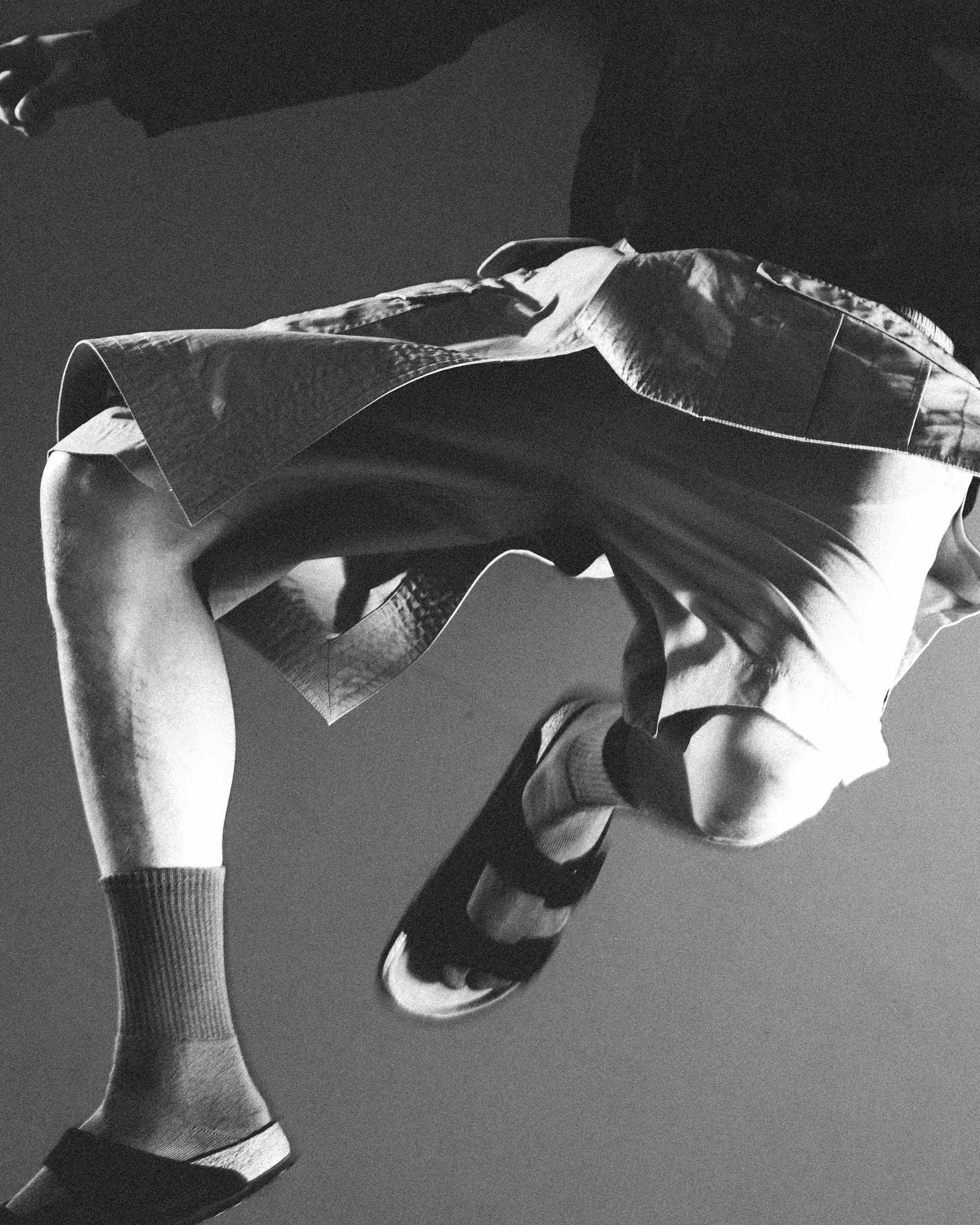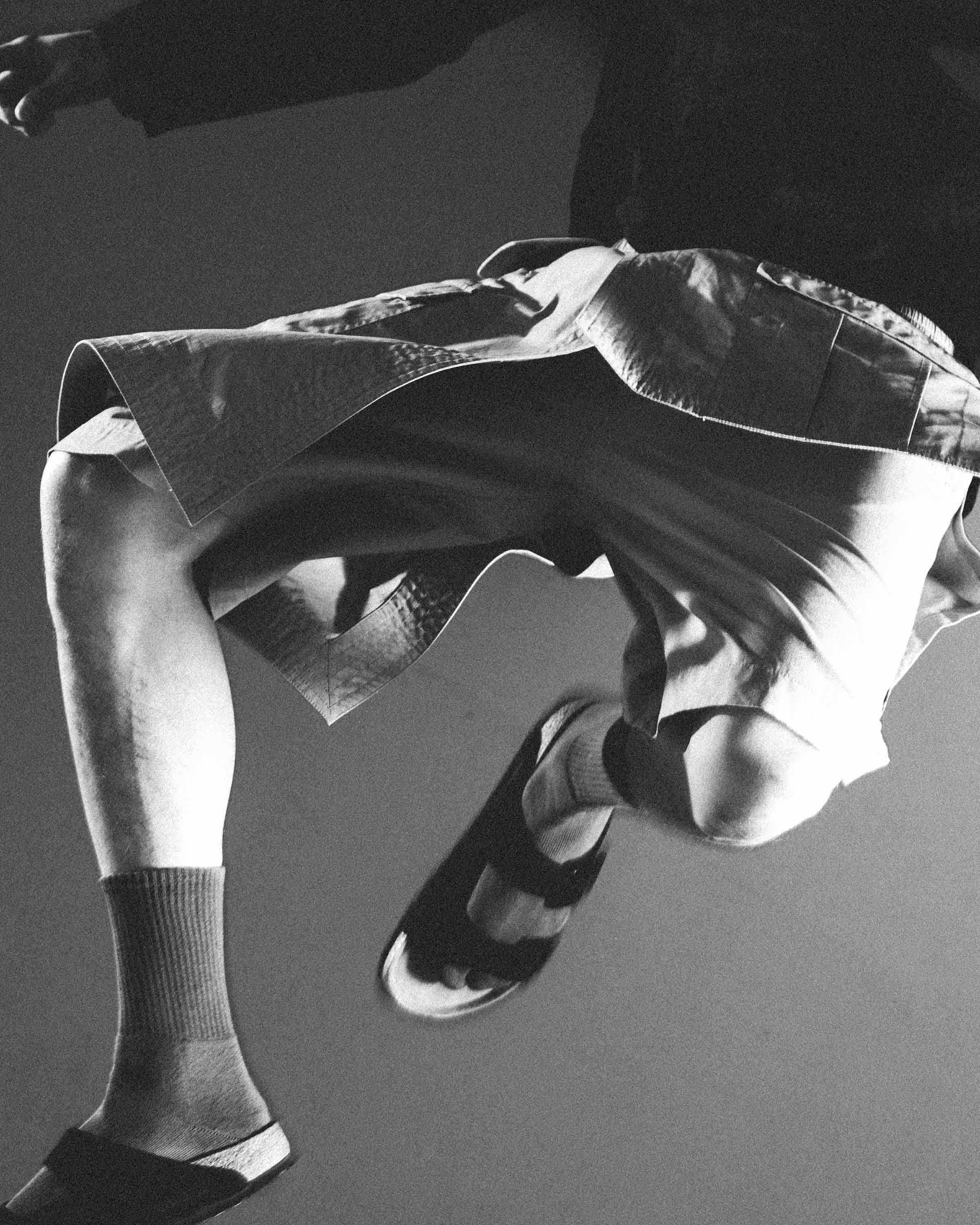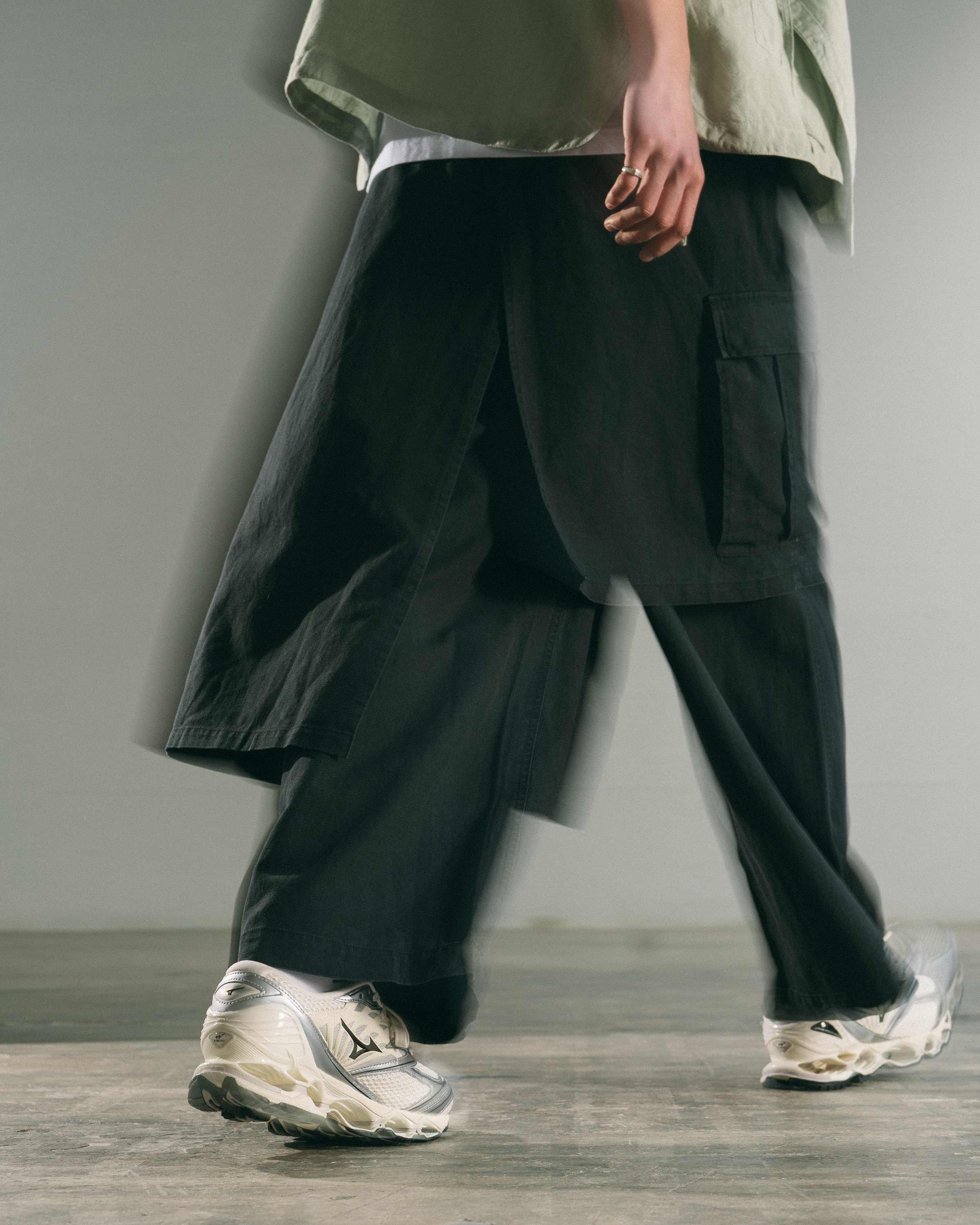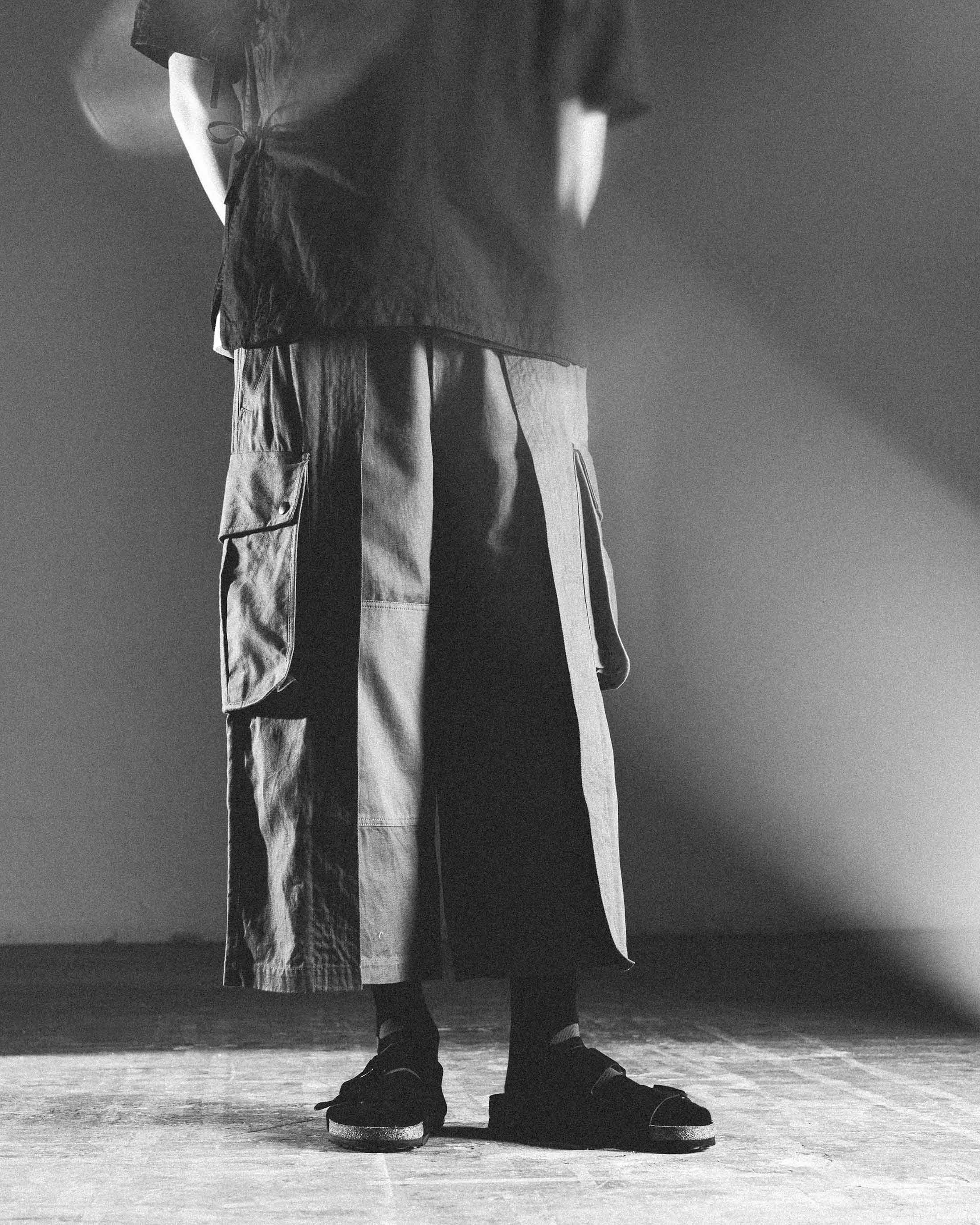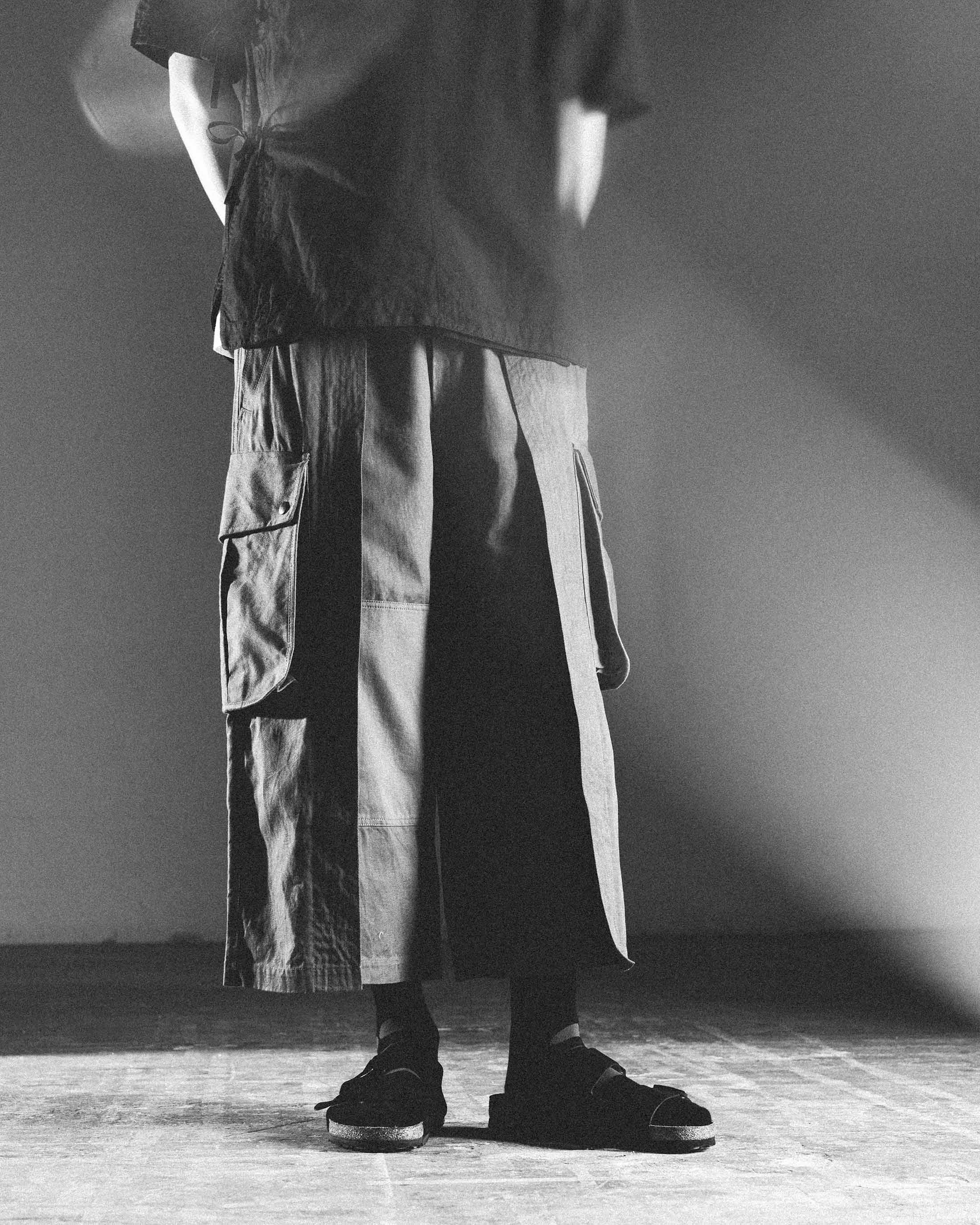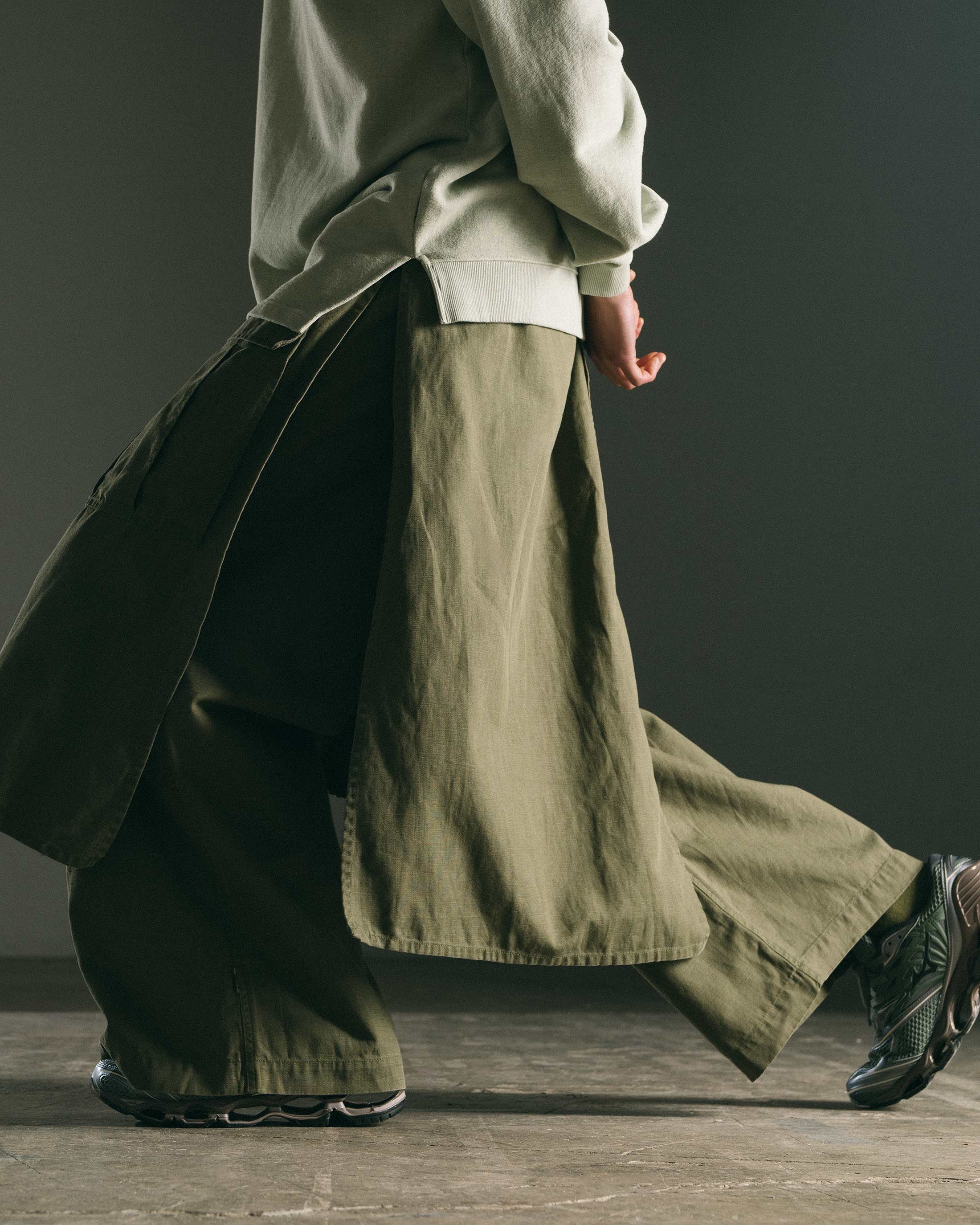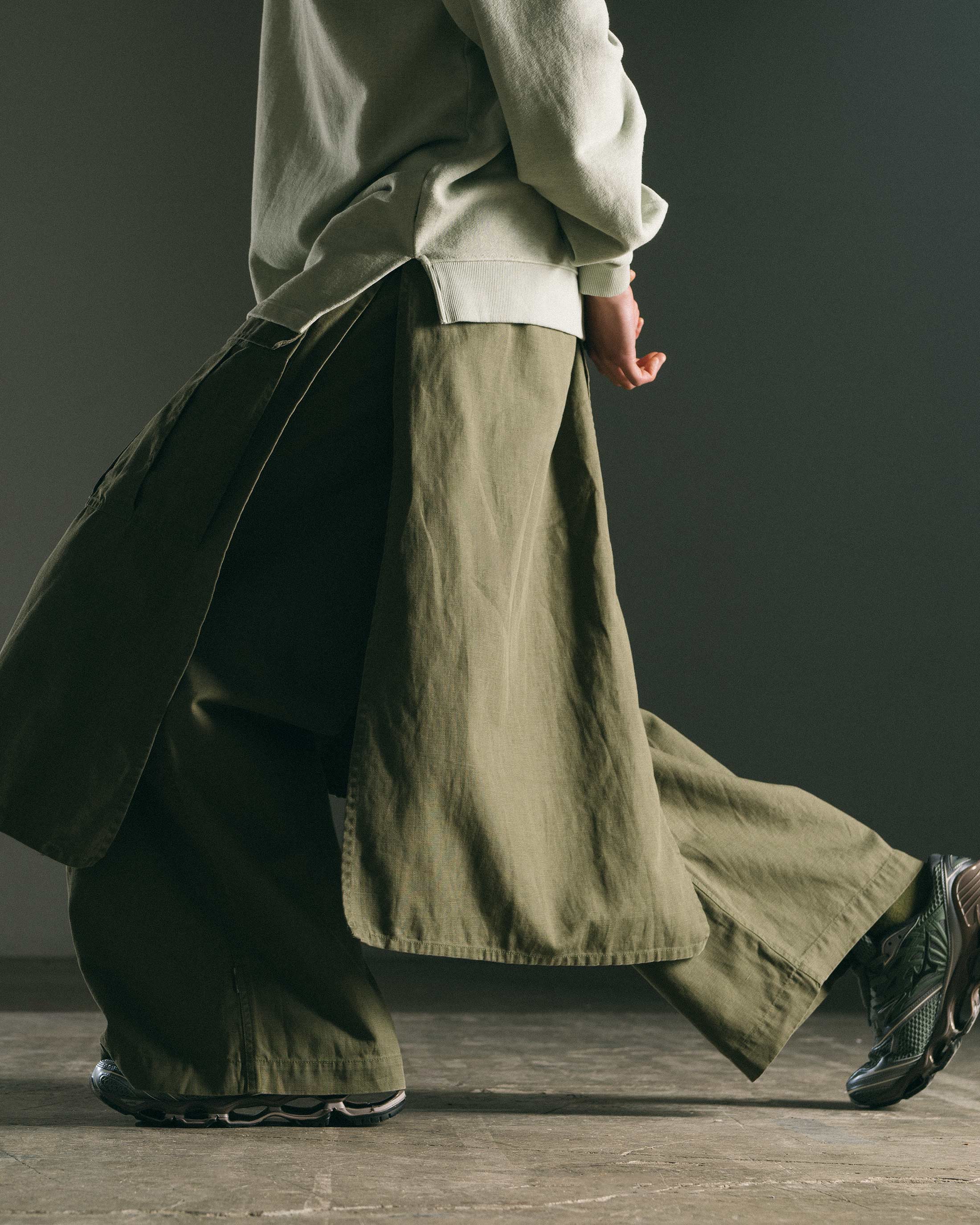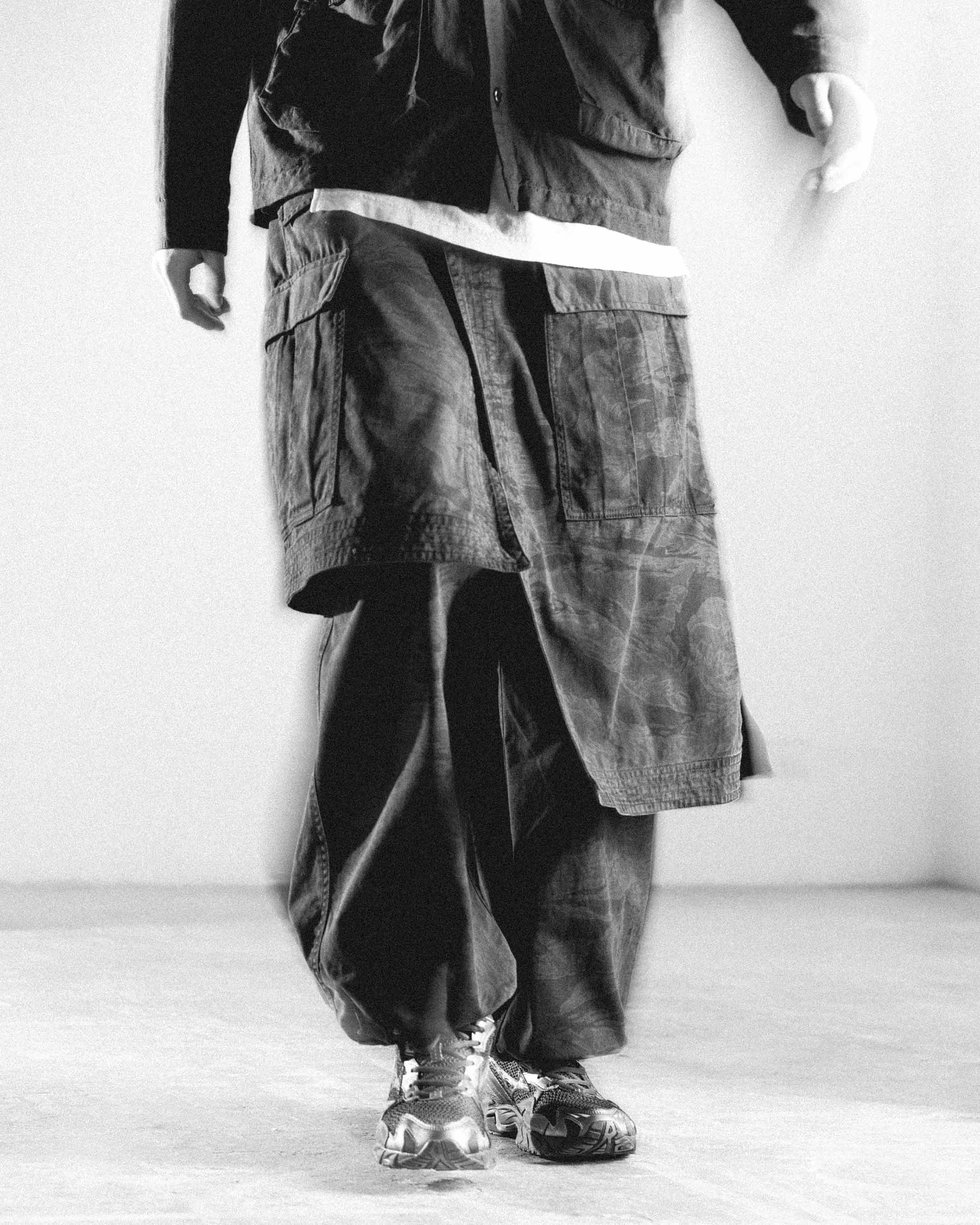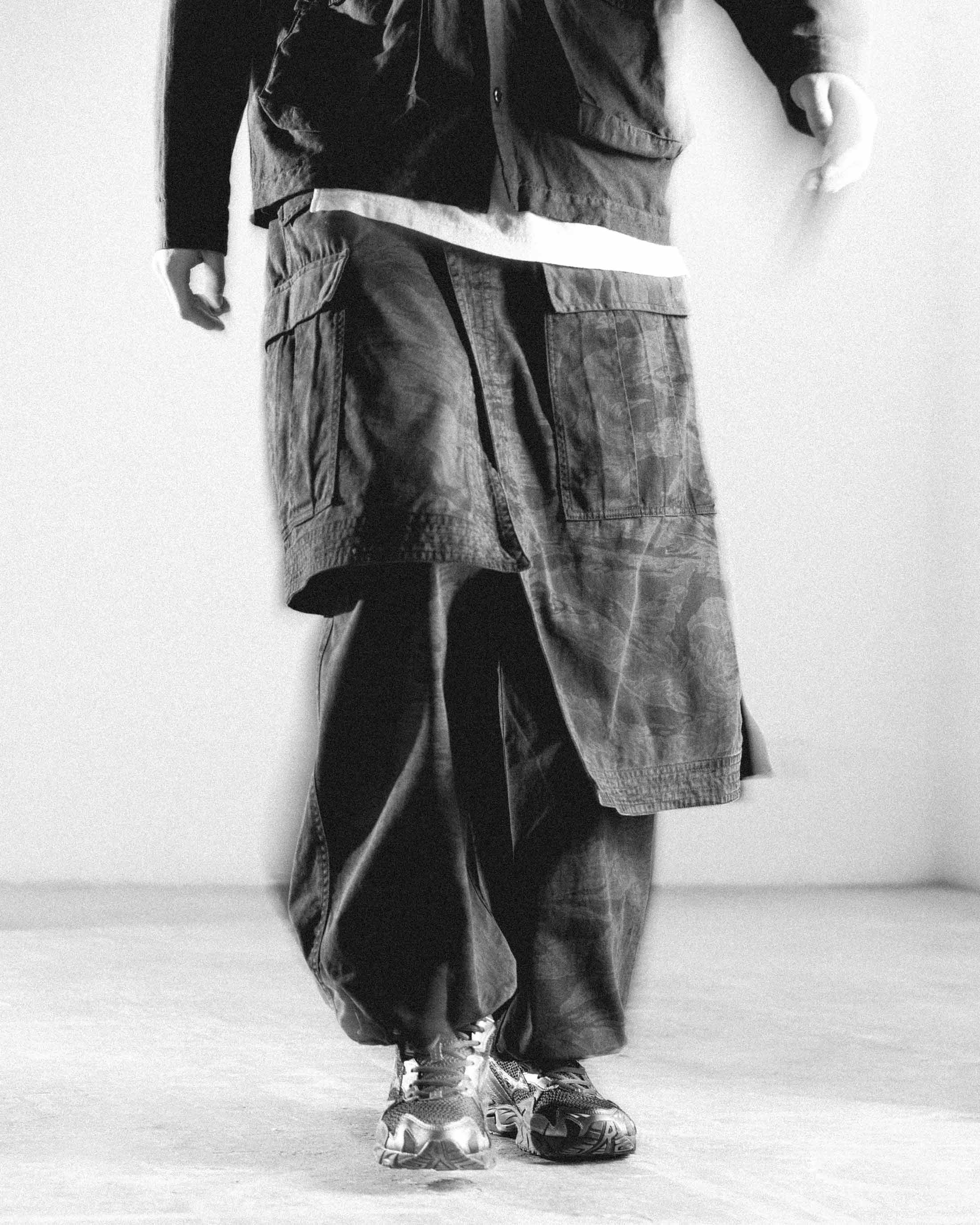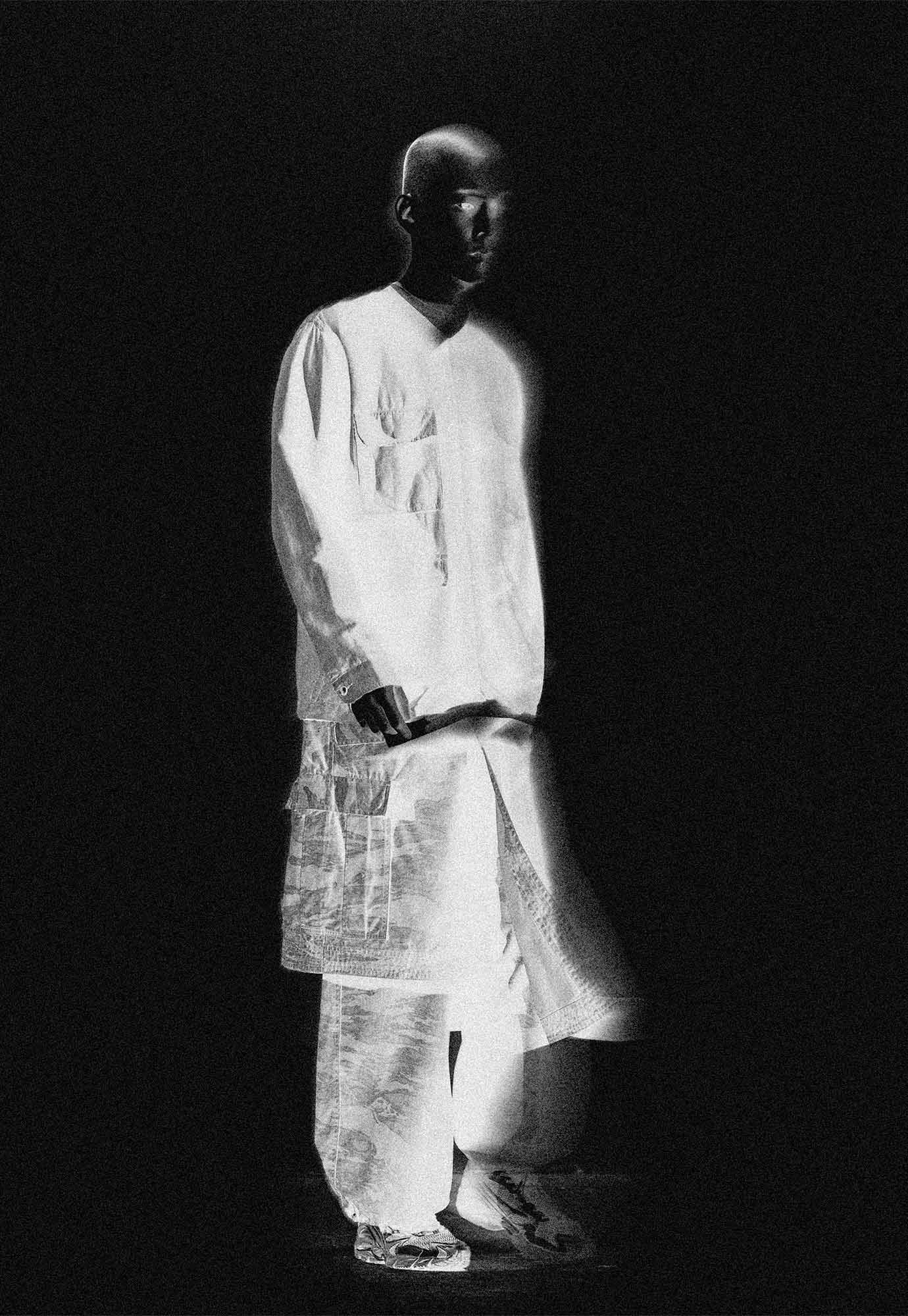
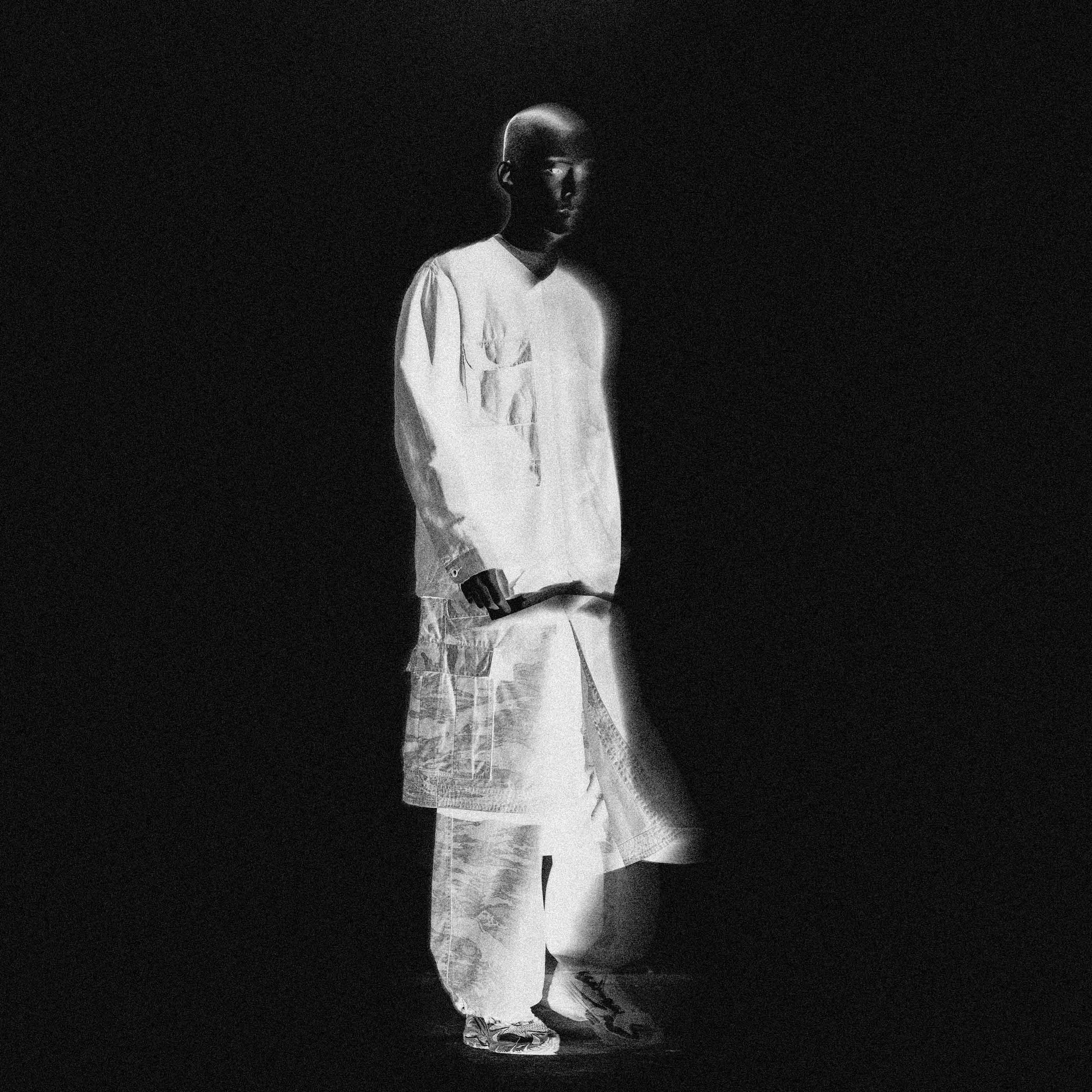


HAKAMA PANTS
Hakama pants first originated in 12th-century Samurai culture. The term “Hakama” refers to two distinct styles: Andon, a pleated skirt, and Umanori, the trouser version, which directly translates to ‘horse rider’. Originally designed to obscure a warrior’s footwork during combat, Hakama embodies Japanese tradition and holds significant cultural symbolism.
Authentic Hakama pants feature five pleats in the front and two in the back, representing a fusion of balance and asymmetry - an embodiment of the Japanese worldview.
Their fitted waist contrasts with a wide, flowing leg, making them both functional and symbolic; they stand as a physical representation of Bushido, the samurai code of ethics. The pleats reference its seven virtues: honesty, honour, loyalty, courage, compassion, respect, and justice - a lasting emblem of discipline and tradition.
